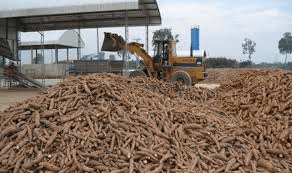Ineffective or inappropriate food crop processing technologies, careless harvesting and inefficient post-harvest handling practices, bad roads, moribund rail systems, bad market practices and inadequate or complete lack of storage facilities, packing houses and market infrastructures are some of the factors responsible for high post-harvest food losses in West African countries.
Fermentation is one of the oldest and most important traditional food processing and preservation techniques.
Challenges of Processing Crop Produce
The foregoing discussions reveal that significant amounts of post-harvest losses affected the economy and welfare of farmers, consumers, and traders. Therefore, some of the important socio- economic and technological issues of post-harvest processing and preservation need to be considered to reduce post-harvest losses.
These include;
1. Size of Land Holding
The size of land holding has a significant effect on the extent of post-harvest losses at the farm and different handling points.
A comparative study on of the various post-harvest practices among small, medium, and large farms would enable researchers and policy makers to identify the appropriate post-harvest loss reducing technologies for specific group of farmers.
2. Educational Background and Training of Farmers and Traders
The educational attainment of the farmer including his attendance in informal training related to postharvest technology is another factor that needs to be considered.
Their participation in various seminars, workshops, and informal training on farming techniques would enable them to be receptive to the adoption of appropriate technology.
3. Attitude of Farmers
Some investigations of the farmer’s attitude disclosed that some of them are not aware of proper handling practices since they are more concerned with pre-harvest losses due to flood, drought, insect damage etc.
Others view, loss or gain as the result of God’s punishment or God’s mercy; others associated loss to chance or bad luck etc.
4. Level of Income of Farmers
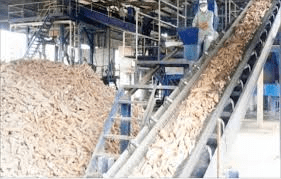
Income is very important as it affects largely the level of capital investment of farms. The income generated from farm to off-farm sources would determine whether the farmer is financially capable of reducing post-harvest losses through investment on better packaging materials or storage facilities.
Low investment has been argued as the main chain effect of low income. The lack of adequate capital inhibits farmers from buying recommended containers for transport.
Most often, farmers may harvest immature crops mainly fruits and vegetables during times when they need immediate cash for the family and/or when prices are high. Harvesting of immature commodities result in poor quality products.
5. Presence of Middlemen in Marketing Channel
In some parts of the world, middlemen are the common source of financing for small farmers. Usually the rate of interest in cash or kind is very high.
A well-managed and organized cooperative is expected to reduce post-harvest losses compared with individual farmer operation.
6. Capital Investment and Financing
Capital investment of some middlemen like exporters, truckers, and cold storage owners is high because of high cost of buildings, vehicles, equipment and machinery and other related costs.
Read Also : Transportation of Crop produce and Factors that may Compromise Quality during Transportation
A much higher capital investment is expected in the operation of cold storage facilities. The relationship between big capital investment and post-harvest losses, and information on postharvest practices should be collected through research.
7. Consumer’s Behaviour
The extent of post-harvest losses at the consumer level can be related to their educational level, income, taste and preference, attitude, and family size. It is expected that the higher the educational attainment of the consumer, the lesser will be the food losses or vice-versa. The relationship between these two variables needs to be empirically tested.
A few studies show that household income appears to have a strong relationship between the choice of sorted and assorted food items specially fruits and vegetables. In Metropolitan area, high-income groups prefer to purchase sorted products for assurance of good quality and convenience in preparation.
Low-income groups however, prefer assorted fruits and vegetables due to lower prices. The consumers have stronger preference for freshly harvested fruits and vegetables than stored ones. The tendency of some consumers to over purchase cheap but highly perishable fruits and vegetables has led to wastage due to inadequate storage facilities.
8. Role of Mass Media
Dissemination of post-harvest information through the mass media as a strategy to minimize losses at the consumer level, advertisements and promotion programmes on post-harvest practices of food items should be carried-out to motivate proper attitudes towards reducing food losses.
9. Participation of Policy Makers
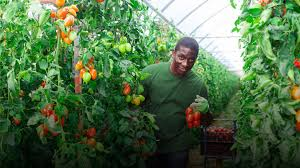
Participation of policy makers in the development of postharvest industry is essential, considering their capacity to create the required policy and climate conducive to adopting post- harvest practices.
Thus, an intensive and more effective extension effort would be required by policy makers who set national priorities.
Providing policy guidelines for increasing post-harvest research and development activities carried out by research institutions and universities to determine the best-suited technology at the farmer and grain processor levels is also needed.
Strategies for Enhancing Crop Processing
The future strategies of post-harvest research should be determined keeping the following constraints in view:
1. Climatic Constraints at Harvesting
Rainfall at harvest time delays harvesting, threshing and drying of cereals grains. The rainfall at this time favours disease and pest infestation as well as reduces seed quality.
High temperature reduces yield and increases disease incidence. Rainfall and hailstorm in the later part of winter and during summer cause reduction in millet grain yield and quality.
2. Harvesting, Threshing, Cleaning, and Sorting
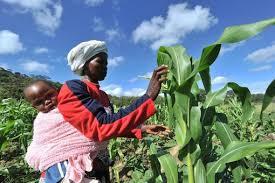
Appropriate machines need to be developed and adopted through research and extension for harvesting, threshing, cleaning and sorting.
3. Drying and Field Transportation Systems
The drying problem is acute, particularly when there is rainfall. It is a very serious problem in the eastern region of the country where the wet period is longer.
The problem is more acutely felt in the case of grain legumes since they lose viability more rapidly at high humidity. Large quantities are further spoiled by fungal attack.
4. Storage
In spite of some research conducted on storage of food grains, legumes and oil seeds the most suitable storage technologies are yet to be developed. Development of home level techniques for drying and storage of various crops is required
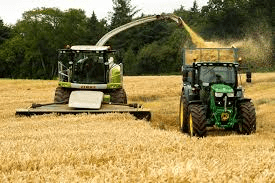
5. Handling and Transportation
Inadequate transport, lack of mechanical handling facilities, lack of mobile refrigeration facilities are some of the acute problems encountered during handling and transportation. Development of improved packaging technologies for fruits, vegetables, tubers and spices, and processed products is needed.
6. Processing and Preservation
Utilization of fruits, vegetable and tuber crop wastes, extension of shelf life of fresh fruits, vegetables and spices, and home-level processing technologies should be promoted.
7. Future Post-harvest Research Prioritie
Genetic manipulation for long life, diseases and environmental-stress resistant cultivars.
Modeling cultivating conditions for high quality and long life (avoiding root stress by heat or drought).
Environmental friendly pest control.
Objective determination of suitable harvesting date.
Postharvest treatments (heat, UV, irradiation CO2, chemicals) for storage ability.
Monitoring refrigerating systems
Optimum storage conditions as storage for tropical fruits, ornamentals, planting material, fresh pack and lightly processed produce.
Possibilities of modified atmosphere packaging (MAP), absorption layers, inserts sensors, PP films with micropores.
Prevention of possible pathogenic organisms in MAP products.
Adaptive control of storage conditions with biological sensors.
Storage during transport and as quarantine measures.
Humid forced air precooling.
Minimum impact and vibration norms for bruising during sorting and packaging.
Objective non- destructive measuring of quality and maturity
Environmental friendly packaging.
Consumer and traders quality preferences in each country.
Cost and return of the investment of postharvest technology.
Cost and return of the investment of postharvest technologies.
Fundamental research on senescence, ripening, respiration, ethylene effect, chilling, fermentation, superficial browning.
In summary, the post-harvest losses of different food items especially fruits and vegetables, are a great concern to us. Post-harvest losses due to inadequate facilities of processing and preservation must be given due importance to ensure the food security both at macro and micro levels.
Short term preservation may be applicable to horticultural commodities that are consumed relatively soon after harvest. For them the best preservation techniques involves keeping the product alive and respiring.
Shorter preservation does not involve destruction of microorganisms or enzymes, deteriorative reactions will therefore proceed, often at a faster rate due to the stresses imparted during harvesting and handling operations.
Read Also : Agribusiness Enterprise Selection Guide
Long term preservations encompass inactivation or control of microorganisms and enzymes and reduction or elimination of chemical reactions that causes food deterioration.
High post-harvest food losses, arising largely from limited food preservation capacity, are a major factor constraining food and nutrition security in the developing countries of West Africa, where seasonal food shortages and nutritional deficiency diseases are still a major concern.
Simple, low-cost, traditional food processing techniques are the bedrock of small-scale food processing enterprises that are crucial to rural development in West Africa.
It is estimated that about 50% of perishable food commodities including fruits, vegetables, roots and tubers and about 30% of food grains including maize, sorghum, millet, rice and cowpeas are lost after harvest in West Africa.
Ineffective or inappropriate food processing technologies, careless harvesting and inefficient post-harvest handling practices, bad roads, moribund rail systems, bad market practices and inadequate or complete lack of storage facilities, packing houses and market infrastructures are some of the factors responsible for high post-harvest food losses in West African countries.
Fermentation is one of the oldest and most important traditional food processing and preservation techniques.
Read Also: Ways to Make Money from Biodegradable Waste Materials

